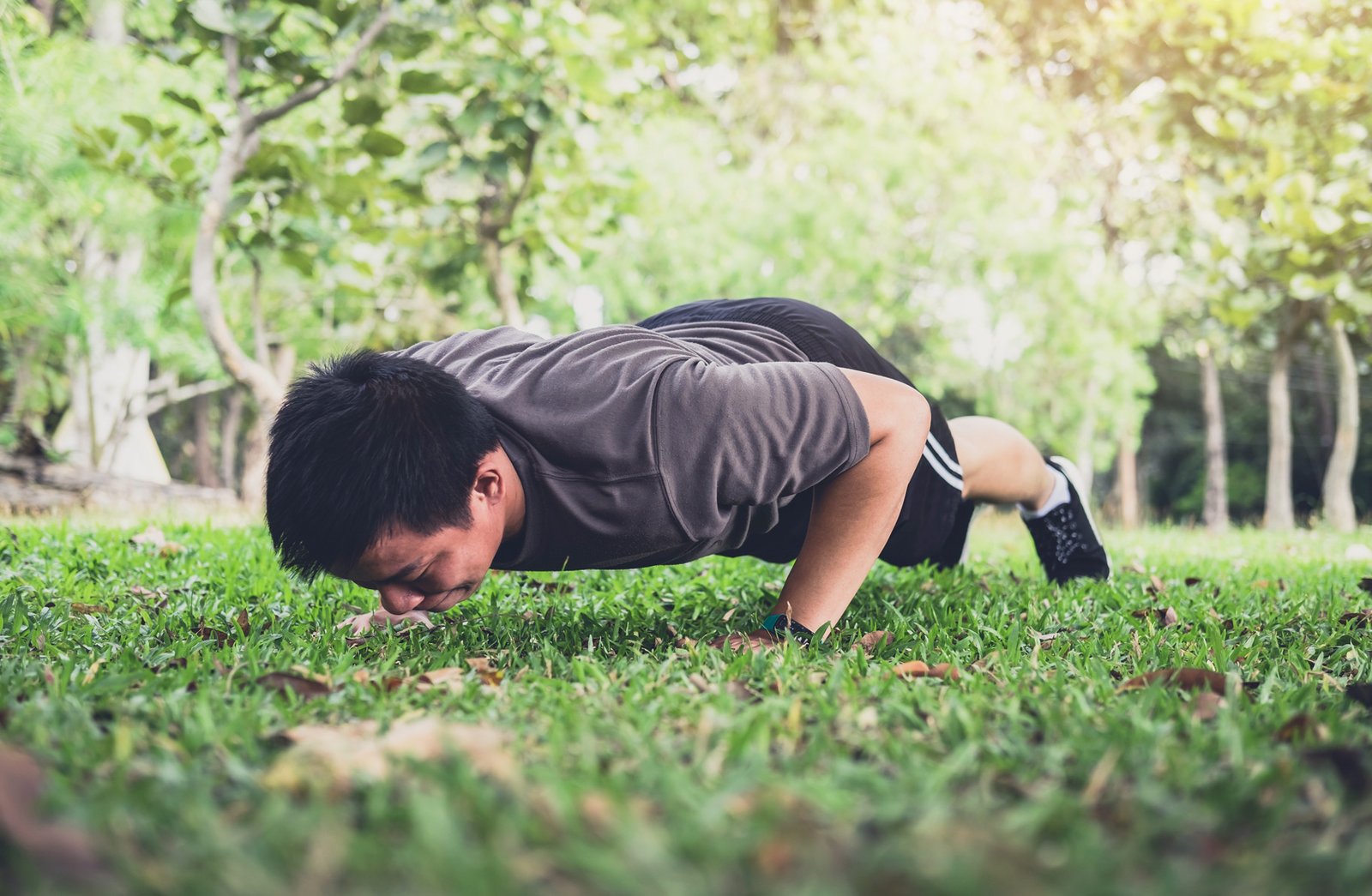Calisthenics is a form of exercise that relies on your own body weight to improve strength and physical fitness. With this method, you can achieve effective results without needing heavy equipment or expensive gym memberships.
History of calisthenics
Before diving into its history, let’s first understand the origin of the word “calisthenics.” The term comes from the Greek words “kallos” (beauty) and “sthenos” (strength).
Much like the word calligraphy, which means beautiful writing, calisthenics means beautiful strength. While calisthenic movements have existed since ancient times, the concept of combining beauty and strength became prominent around the 1800s—particularly for women. Calisthenics was seen as a suitable form of exercise for women, helping improve posture and strength with graceful movements.
However, if we consider the modern meaning—training strength using body weight—then calisthenics has been around since ancient times.
600 – 500 B.C – Spartan Soldiers
For those unfamiliar, 600 B.C. means 600 years before year 0—so in 2025, that would be 2,625 years ago. Ever seen the movie 300 with the famous line, “This is Sparta!!”? Yes, those were the Spartan soldiers or Hoplite warriors. They practiced calisthenics as part of their military training.

Meanwhile, in another part of the world—China—monks were also practicing calisthenics to protect their temples from invaders and robbers.
19th century / 1800’s
In the early 1800s, particularly in Germany, Friedrich Ludwig Jahn and Adolf Spiess popularized both calisthenics and gymnastics. However, their movements were specifically designed for women, as the exercises only used body weight, which was considered more suitable for women.
Calisthenics gained further popularity when Pehr Henrik Ling in Sweden introduced it into school physical education programs.
1820
By the 1820s, calisthenics had become a favored form of exercise among women, alongside horseback riding, walking, and dancing. During this time, the British military also began incorporating calisthenics into their training programs.
1892
Calisthenics made its way to America when Catherine Beecher wrote a book about calisthenics for women. The book became so popular that the movements were adapted for men and people of all ages.
Meanwhile, Herman Koehler wrote a calisthenics manual that became the standard fitness routine for the U.S. military—a standard that continues today. Basic movements required during U.S. military recruitment include push-ups, sit-ups, and running.
1930 – 1980
Calisthenics began to be introduced in Australian schools and quickly gained popularity throughout the country.
In the U.S., for three decades starting in the 1950s, Jack LaLanne became a major figure in the fitness industry. He introduced modern gym equipment and also had a TV show where he promoted calisthenics as a way for people to stay fit and healthy from home using only bodyweight and simple tools.
Modern era 2002
A team called Ruff Ryders began producing fitness videos. Although not widely known, they introduced an interesting concept: “Fitness from the streets.” They worked out using whatever equipment they could find outdoors—and still achieved impressive physiques. Yes, they were doing calisthenics.
They showcased movement variations that would later become popular in the fitness community.
2008 – Youtube era
Hannibal Lanham, also known as Hannibal for King, became a YouTube sensation with his street workout videos, showing a wide variety of calisthenic movements. Thanks to him, and other emerging YouTube creators, the calisthenics community grew. These YouTubers began challenging themselves with increasingly difficult moves.
Tahun 2011 – First Calisthenics Federations
In 2011, the World Street Workout and Calisthenics Federation (WSWCF) was founded. This organization was established to hold events, competitions, and to promote calisthenics worldwide. A year later, in 2012, the World Calisthenics Organization was also founded.
If you’re interested in starting calisthenics at home, this article will help you understand the definition, basic movements, potential equipment, and the health benefits you can gain.
What is calisthenics?
In short, calisthenics is a form of physical exercise that uses your own body weight as resistance to improve strength, flexibility, and overall fitness. It requires no special equipment, making it suitable for practice at home or outdoors.
This type of training involves a variety of body movements that effectively work multiple muscle groups. By learning calisthenics, you can build total body strength without relying on gym equipment—making it highly accessible and easy to do anywhere.
Calisthenics relies on body weight and gravity to help strengthen muscles, improve mobility, and boost endurance.
The movements in calisthenics are generally simple in nature, as they don’t involve any equipment and rely solely on body mechanics. Some movements may be challenging but offer significant benefits—squats and push-ups, for example, are commonly used in various workout routines.
Some people even consider calisthenics a form of gymnastics, and interestingly, it’s also known as a beginner-friendlytype of exercise. However, that doesn’t mean it’s not suitable for advanced levels. Calisthenics can be practiced at various intensities, rhythms, and levels of difficulty.
It’s a great form of training suitable for people of all ages and fitness levels.
Today, calisthenics is also used as a warm-up method to target specific body parts and maintain general fitness. Best of all, you can do it from the comfort of your home.
Benefits of calisthenics movement
The main benefit of calisthenics is to build strength and improve overall fitness. But beyond that, calisthenic exercises offer many additional health advantages.
Here are some of the key benefits of calisthenics:
1. Builds Body Strength
With a variety of movements, calisthenics helps improve your muscle strength. One study showed that calisthenics can significantly increase strength in a short period of time.
After around 8 weeks of calisthenic training, participants were able to increase the number of push-ups and pull-ups they could perform. In contrast, those who didn’t practice calisthenics saw no such improvements.
2. Improves Cardiovascular Fitness (Endurance)
Regular calisthenic training can boost cardiovascular health, including heart health and stamina.
Research shows that high-intensity movements like mountain climbers or burpees improve endurance. In fact, fast-paced calisthenics can provide similar benefits to running on a treadmill.
3. Aids in Weight Management
Calisthenic exercises help reduce body fat and maintain muscle mass. Since many of the movements are aerobic, they can aid in weight loss and weight maintenance.
4. Improves Posture
Calisthenic workouts involve stretching that strengthens your tendons, muscles, and ligaments. Including these movements regularly in your routine helps improve flexibility, balance, and body posture.
5. Enhances Mood and Well-Being
Exercise in general helps reduce stress, improve mood, and support mental well-being. The variety and uniqueness of calisthenic movements can make your workout fun and mentally stimulating, keeping you motivated.
6. Increases Flexibility and Mobility
Calisthenics helps increase both flexibility and mobility. Exercises like squats and planks require a wide range of motion, which in turn helps maintain healthy, flexible joints.
7. Improves Heart Health
Calisthenic training can enhance cardiovascular performance. High-intensity movements like burpees and squat jumps raise your heart rate and stamina, which is beneficial for heart health.
8. Reduces Risk of Injury
Proper calisthenic training strengthens the muscles and ligaments that support your joints, helping to reduce the risk of injury. It also improves posture and balance, which are essential for injury prevention.
9. Flexible Training Options
Calisthenics offers a wide variety of exercises that can be done anywhere—whether at home or outdoors. It allows you to customize your workouts to fit your schedule and environment without needing a gym.
10. Mental Health Benefits
Calisthenics can also positively impact your mental health. Studies have shown that bodyweight exercises may help slow cognitive decline and potentially prevent dementia.
Calisthenic Exercises
Here are some basic calisthenic exercises for beginners that are commonly used and effective in building strength and overall fitness:
1. Push-Up
Push-up is one of the most basic yet highly effective calisthenic movements. This exercise targets the chest, shoulders, and triceps.
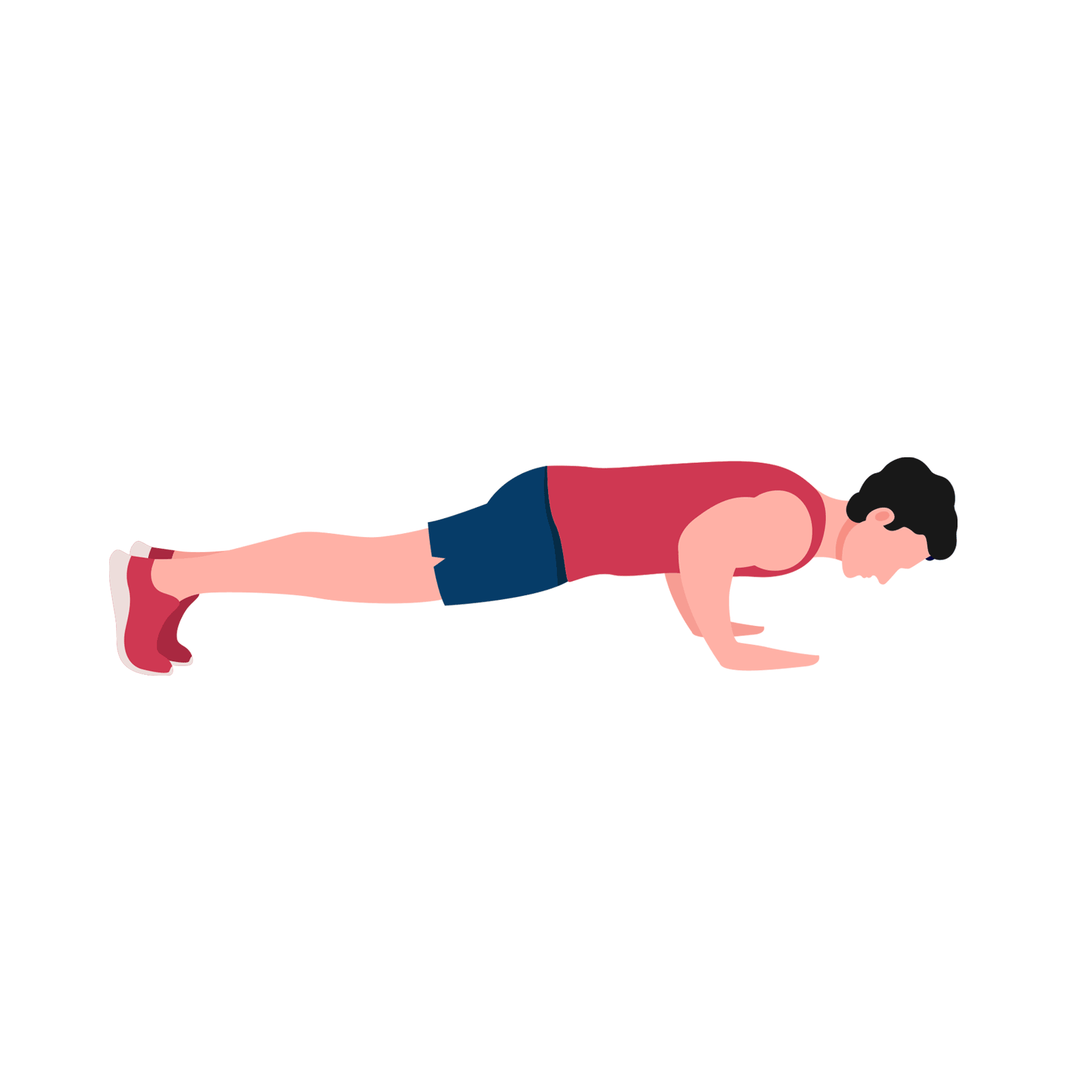
To perform a push-up, start in a plank position with your hands placed under your shoulders and your body in a straight line. Lower your body until your chest nearly touches the floor, then push yourself back up to the starting position.
Push-ups help strengthen upper body muscles and improve overall body stability.
2. Pull-Up
Pull-up is a calisthenic movement that’s excellent for training the upper back, shoulders, and arms. To do it, hang your body on a bar with your palms facing forward.

Pull your body up until your chin goes over the bar, then lower yourself down slowly. This exercise requires significant back and arm strength and helps build a wider, stronger back.
3. Squat
Squat is a calisthenic movement that targets the quadriceps, hamstrings, and glutes. Stand with your feet shoulder-width apart and keep your body upright. Bend your knees and push your hips back as if sitting in a chair, then return to standing.
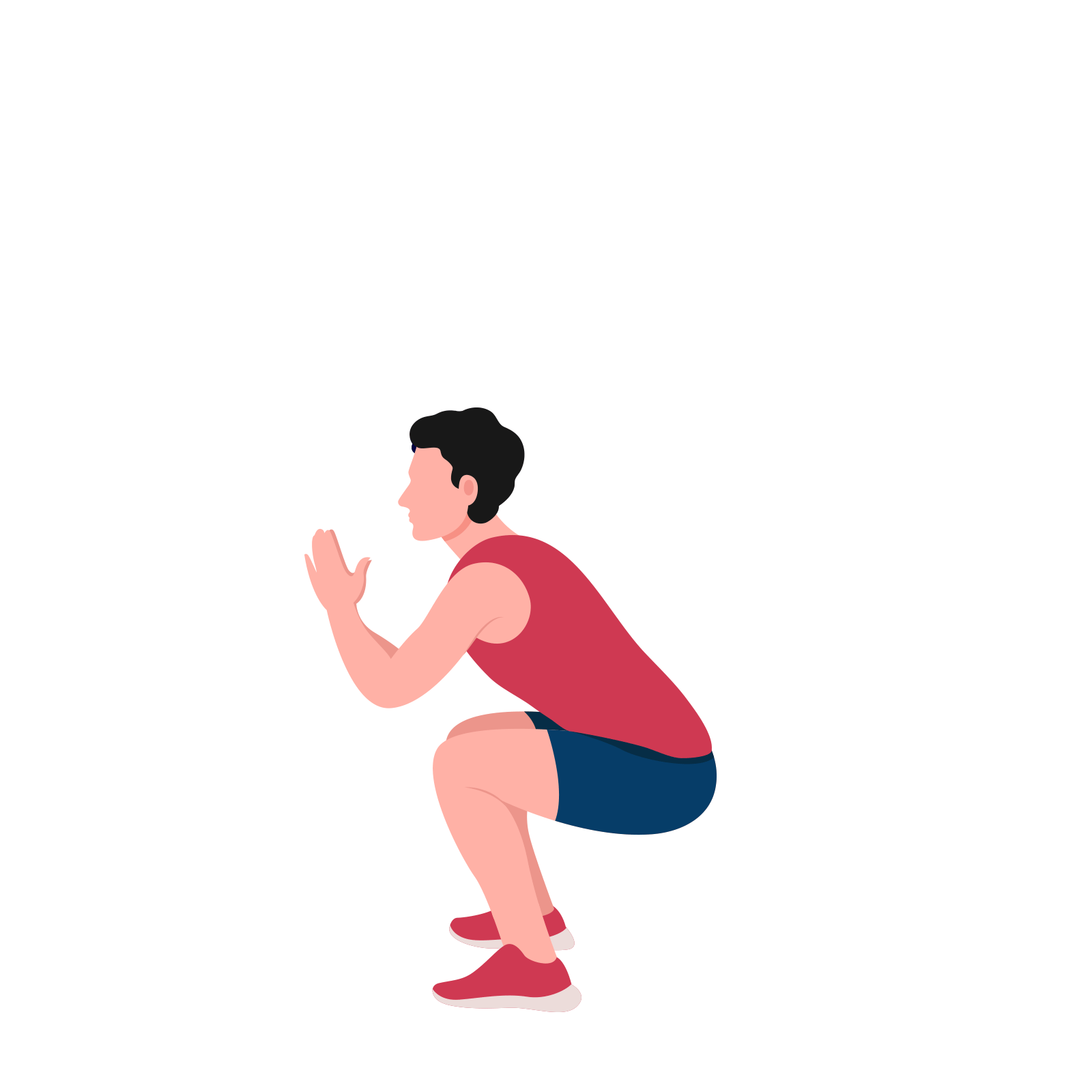
This exercise not only strengthens the legs but also helps improve stability and lower body balance. Squats are important for building leg and glute strength and increasing muscular endurance.
4. Dips
Dips are one of the calisthenic variations that effectively train the chest and triceps. Use two chairs or bars to support your body. Place your hands on the chairs with your body between them, bend your elbows to lower your body, then push yourself back up.

This exercise can improve upper chest and triceps strength and help build noticeable muscle mass in those areas.
5. Plank
Plank is an excellent core workout that targets the abdominal muscles and lower back. To perform a plank, position your body with your elbows and toes touching the ground, keeping your body straight from head to toe.
Plank is an isometric movement, meaning you don’t move your body during the exercise.
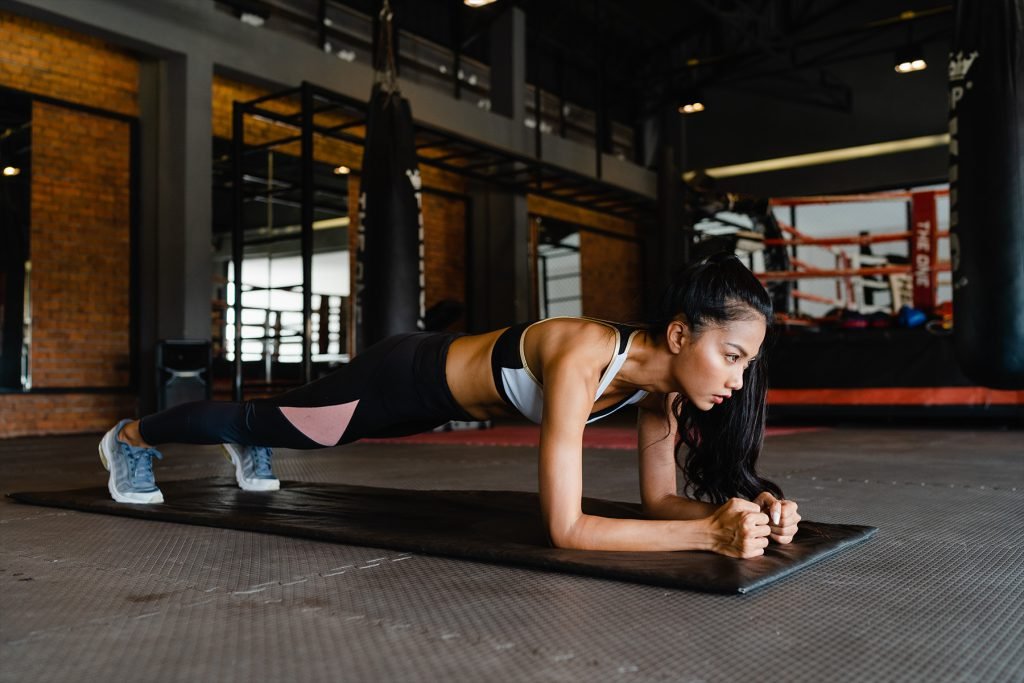
Hold the position for a few seconds up to several minutes depending on your ability. Plank helps strengthen core muscles that are important for stability and back health.
6. Lunges
Lunges focus on strengthening the lower body muscles (glutes, hamstrings, quadriceps) and calves. Lunges are also a good choice for slimming the thighs.
Even though they look easy, lunges require endurance. There are various types of lunges with different benefits. Forward lunges have you step forward and focus more on the front thigh muscles. Reverse lunges are the opposite, where you step backward and engage the hamstrings more. There are also side lunges where the movement is done sideways.
7. Crunches / Sit-up
Another calisthenic movement is crunches. Keep your head relaxed while lifting your upper body during the movement.
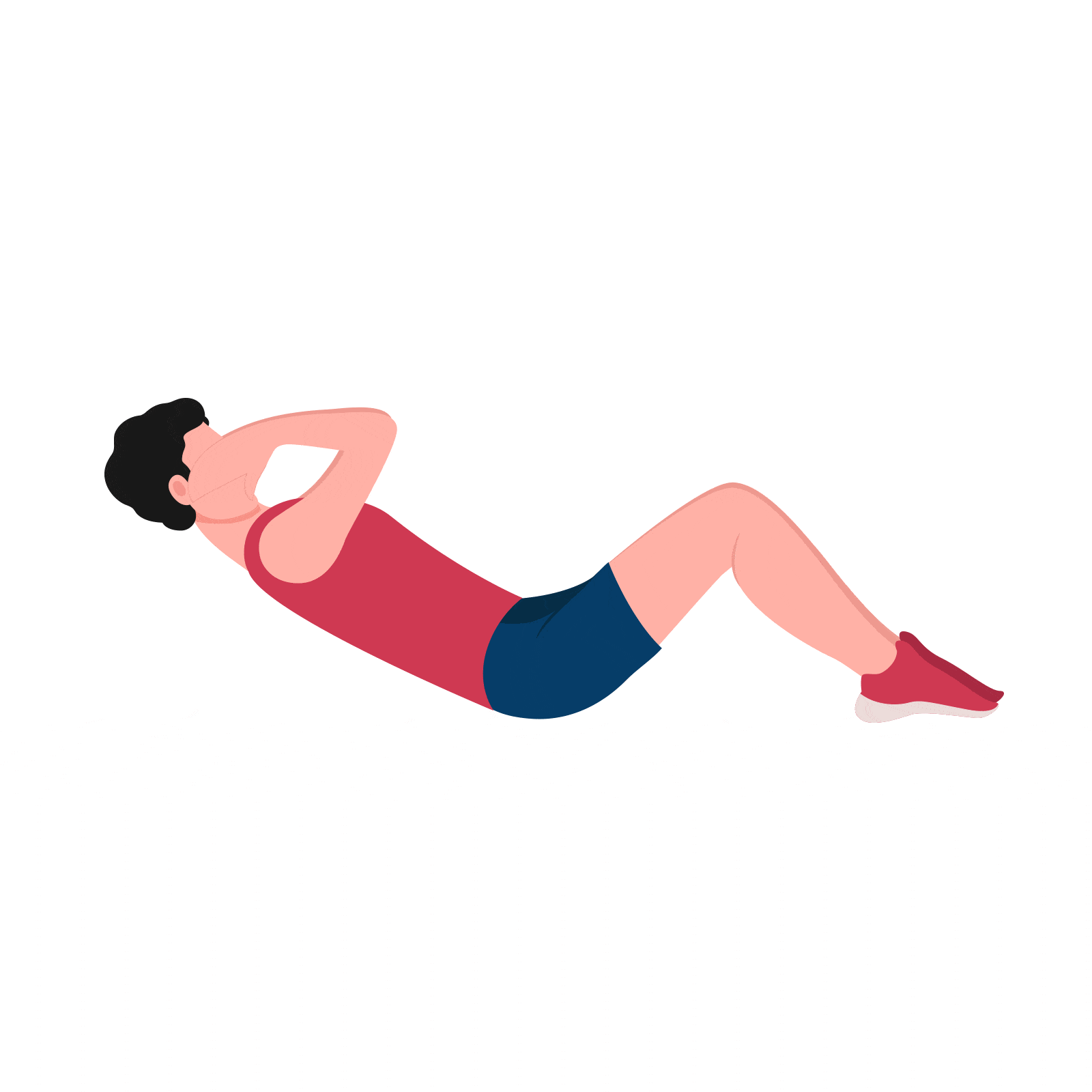
Here are the steps:
- Start by lying flat on your back with your feet anchored and knees bent.
- Cross your arms behind your head or place them above your head.
- Engage your core and lift your upper torso toward your knees.
- Hold the position briefly before returning to the floor.
There are many more advanced calisthenic movements. However, you don’t need to perform them when just starting out. These movements require full-body strength. Here are some of the more challenging calisthenic exercises:
- Muscle-up
- The Pull-over
- Planche
- Handstand
- Pistol squat
- Human flag
Feel free to look up these movements yourself — we’ll cover them in a separate article later on.
Calisthenics training equipment
Here are some examples of calisthenics training equipment that you can consider to improve the quality of your workouts.
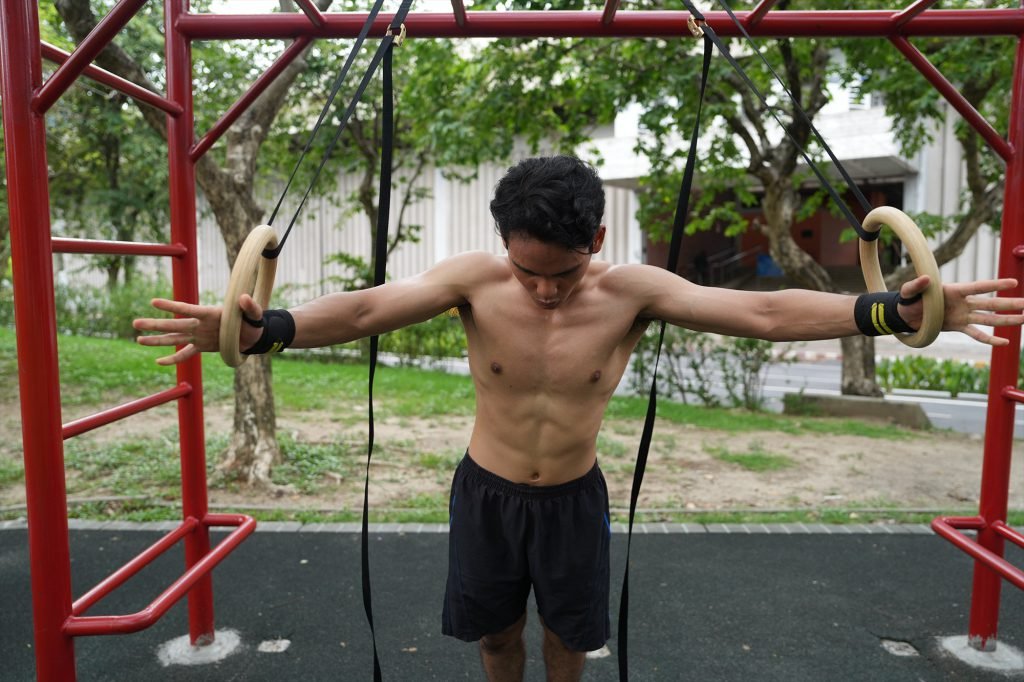
1. Pull-Up Bar
A pull-up bar is a very practical tool for training the back and arm muscles. This equipment is usually a horizontal bar that can be mounted on a doorway or placed on a dedicated frame.
Portable versions are also available, allowing you to use them in various locations. With a pull-up bar, you can perform various movements such as pull-ups and chin-ups, which are highly effective for strengthening the upper body.
2. Dips Bar
The dips bar is specifically designed for performing dips, a movement that relies on chest and triceps strength. This equipment usually consists of two vertical bars with grips at the top.
By using a dips bar, you can perform dips safely and effectively, reducing strain on the wrist joints and providing additional support for proper technique. Dips bars can be found in many gyms or purchased for home use.
3. Resistance Bands
Resistance bands are very useful tools for adding intensity to your calisthenics workouts. These bands are made of elastic rubber and come in various resistance levels.
You can use resistance bands to add challenge to movements like push-ups and squats, or to perform isolation exercises like bicep curls and tricep extensions.
This equipment is very flexible and can be used for a wide variety of calisthenics movements, allowing you to tailor your workout according to your ability and goals.
4. Kettlebell
Although kettlebells are not traditional calisthenics equipment, they can be a very useful addition to your routine. Kettlebells allow you to perform various strength exercises with added weight, which can help improve strength and endurance.
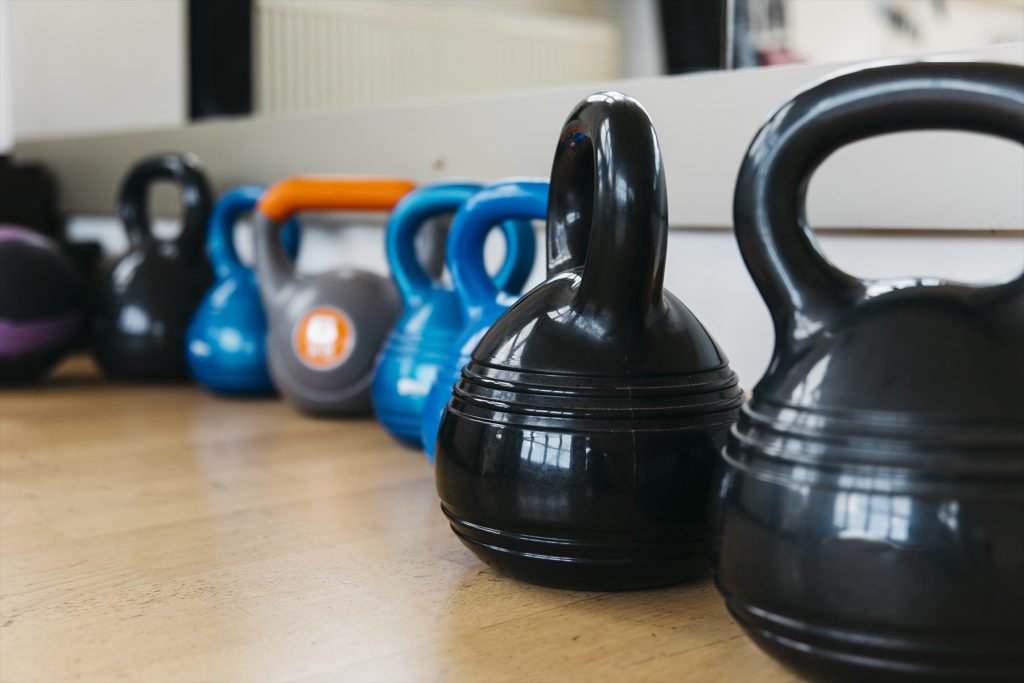
Exercises using kettlebells can engage both the upper and lower body, such as swings, snatches, and goblet squats, which complement basic calisthenics movements and enhance workout results.
5. Yoga mat
An exercise mat is often considered trivial but is actually very important for comfort and safety when doing calisthenics. Mats provide a soft and stable surface for floor exercises like push-ups, planks, and sit-ups.
In addition to improving comfort, exercise mats also help reduce the risk of injury by providing extra cushioning for body parts in direct contact with the floor. With the right mat, your calisthenics workouts will be more comfortable and effective.
6. Gymnastic Ring
Another common yet less accessible piece of equipment is the gymnastic ring, often used alongside a pull-up bar. This tool is also considered versatile and can be used to add variety to your workouts. Usually, rings come with adjustable straps that can be attached and tightened around a bar or even a tree.
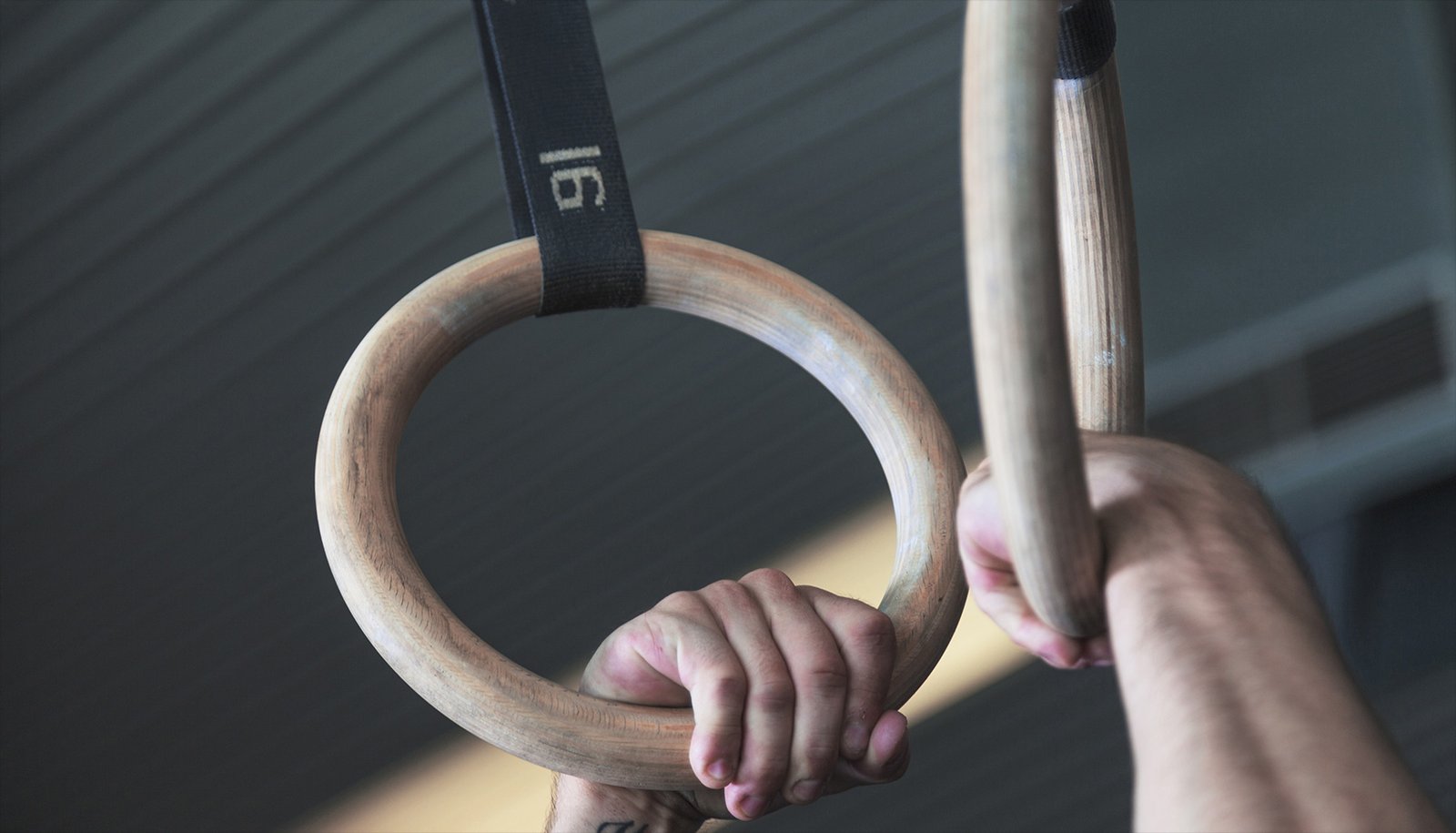
3. Parallettes
Parallettes are portable workout tools that are easy to carry anywhere. Some calisthenics exercises require this tool, such as dips or push-ups. In addition, they can also be used for more advanced movements like handstands or planche.
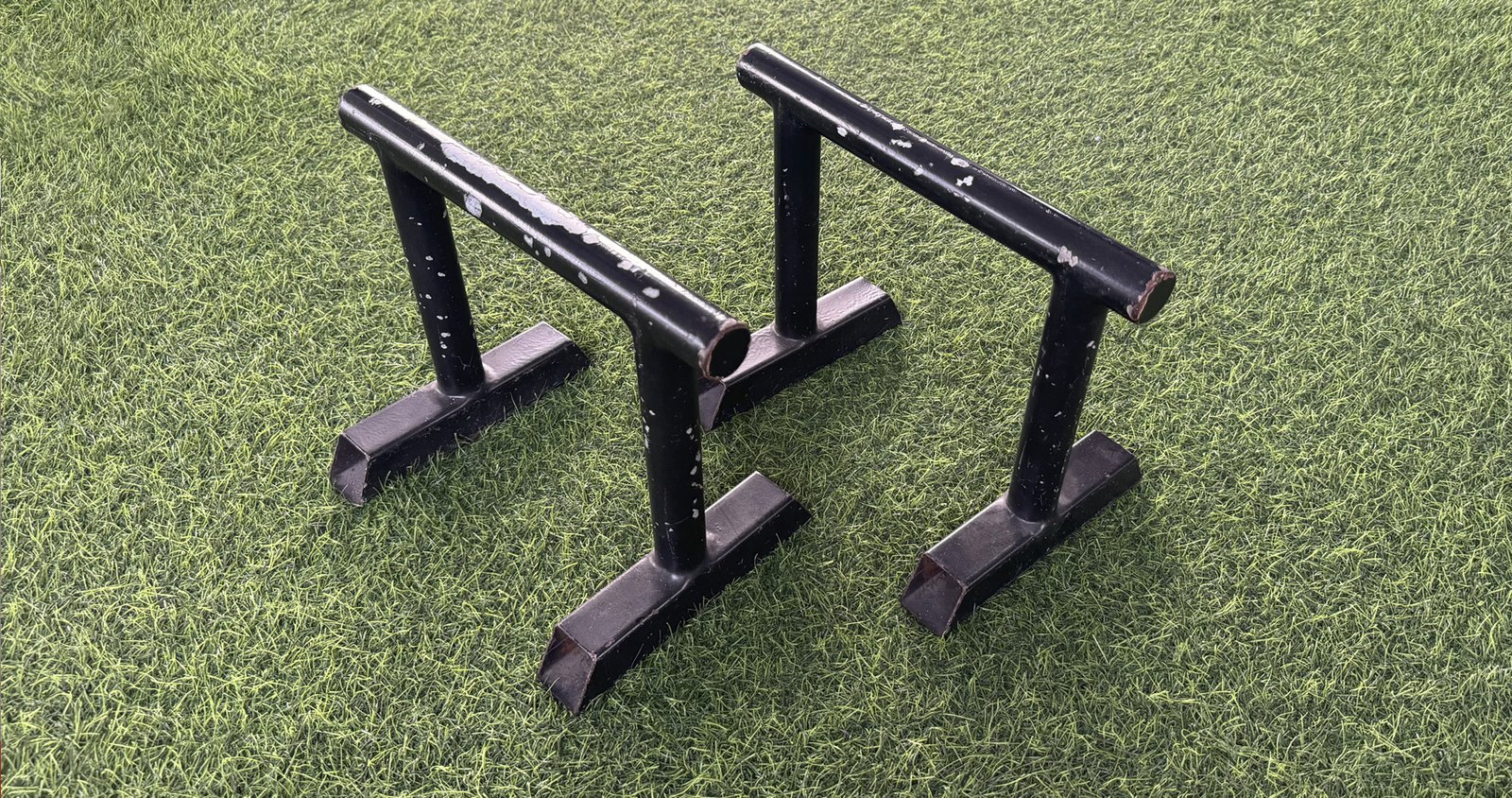
4. Dips Bar
Compared to some of the equipment mentioned above, dips bars are relatively more expensive but can be a long-term investment. They help you train your core muscles and allow you to perform movements like handstands or dips more effectively.
5. Weighted Vest
The last piece of equipment that can help optimize your training is the weighted vest. This tool is already widely used by intermediate to advanced athletes. It is commonly used to assist with exercises such as push-ups, dips, muscle-ups, pull-ups, and many others.
Calisthenics is an effective and flexible training method, ideal for improving overall strength, flexibility, and health. By understanding the various movements and equipment that can be used, you can benefit from calisthenics with or without equipment. Start with beginner calisthenics movements and gradually develop your routine to achieve maximum results.
